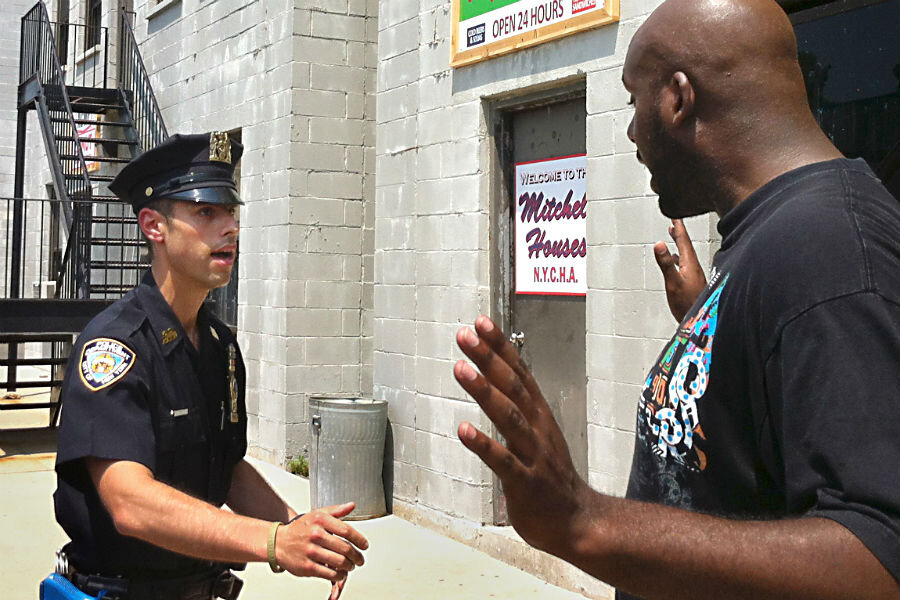NYC 'stop and frisk' almost gone. Yet crime continues to drop. Why?
Loading...
Last year, when New York City's controversial 'stop and frisk' program seemed to be on its last legs – due to a federal court ruling that found it unconstitutional, as well as left-leaning Mayor Bill de Blasio's election – observers predicted crime in the city would skyrocket.
"[There's] no question about it, violent crime will go up," said New York Police Department Commissioner Ray Kelly.
“More black Americans and more Hispanic Americans are going to die,” said Fox News host Bill O’Reilly.
“The body count will start rising,” wrote The New York Daily News editorial board.
'Stop and frisk' is down dramatically – some 79 percent through the first nine months of 2014, according to the NYPD.
And crime hasn't gone up. In fact, it's gone down - way down. The city reported a 20-year-low in its crime rate.
"Five or six years ago we had more crime and more stops, and this year we have less crime and fewer stops," Police Commissioner William Bratton said in a talk last week at New York University School of Law, as reported by Newsday.
The 'stop and frisk' program enables a police officer to stop, question, and if needed, frisk a person for weapons if the officer reasonably suspects he or she is about to commit, or has committed a crime. The tactic is controversial and critics say it promotes racial profiling. Last year, a federal court found the policy unconstitutional because the tactics illegally targeted minorities, who consistently made up about 85 percent of all stops.
A closer look at the number underscores the dramatic drop in its usage. In 2011, police performed nearly 700,000 stops, the highest total on record. In 2013, it was down to 179,065, through Sept. 30. This year police performed 38,456 stops through the same period – far fewer than previous years.
And yet, serious crime in the city is down 4.4 percent, as de Blasio announced Tuesday.
So 'stop and frisk' has been all but eliminated - and crime continues to drop. Why?
While critics of 'stop and frisk' may say the program was not effective, the real reason is quite simple: crime rates have been falling in every major US city for years, especially New York, where crime has steadily fallen since the 1980s, according to FBI data.
In fact, a recent FBI report from more than 270 cities shows declines in every category of crime except rape.
In other words, crime has been falling in New York and other cities for decades – with or without 'stop and frisk,' as the Washington Post made clear in a series of charts that show that the number of 'stop-and-frisks' isn't related to the crime rate.
Why is crime falling?
Experts cite creative policing, better use of data, and community involvement.
"Digital and mobile technologies are ... creating more awareness and connecting the public with law enforcement more immediately," reported the Monitor's Mark Guarino in an earlier article on dropping crime rates. "Not only can the public serve as “the eyes and ears of the police” via the cameras they have on their devices, but they are able to send and receive alerts immediately, which can help preventing and solving crime."
“The community becomes an extension of the police,” Tod Burke, a criminologist at Radford University in Radford, Va., told the Monitor.
Other factors may include rising incarceration rates, which remove those most likely to commit crimes from the streets, as well as urban renewal programs, which improve blighted areas that are otherwise havens for crime, as Guarino noted.
So while it's nearly impossible to say 'stop and frisk' was fruitless in decreasing crime, it's safe to say that it's role in reducing crime is far from proven.








